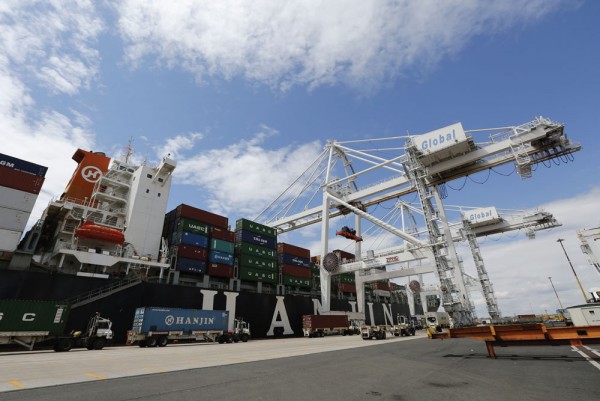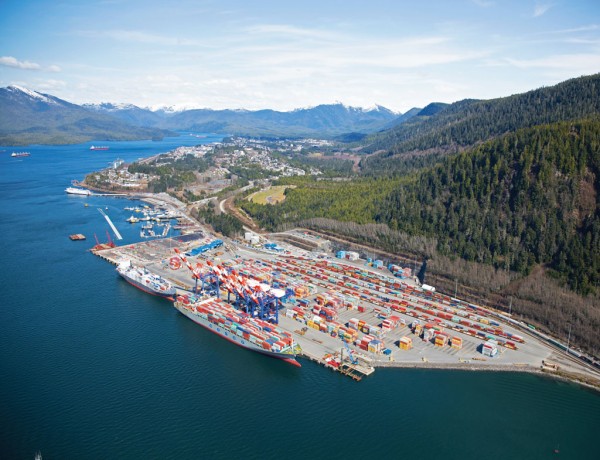PMSA says New York/New Jersey is now nation’s second busiest port
For the first time since 1992, the Port of New York and New Jersey has overtaken the Port of Long Beach to become the second busiest port in the United States, according to the July Pacific Merchant Shipping Association (PMSA) West Coast Trade Report.
New York/New Jersey Is #2
In the report, PMSA states: “It’s now the Port of New York/New Jersey… we have drawn attention to the possibility that PNYNJ might regain a status it hasn’t enjoyed since 1992, that of being America’s second busiest container port (after the Port of Los Angeles). So, here’s the latest tally. Over this year’s first five months, Long Beach reported handling 3,008,468 total TEUs (loaded + empty) or 192,275 fewer TEUs than in the same period last year. PNYNJ, by comparison, reported a May YTD (Year-To-Date) count of 3,041,814 TEUs or 33,346 more TEUs than its Southern California rival.”
PMSA said this situation is not expected to change soon: “The reshuffling in ranking is not expected to change when June’s figures are all counted. We already know that Long Beach had another off month in June as total container traffic through the port fell 10.0% (-75,021 TEUs) from June 2018. But we will have to muster the patience of Job to await the arrival of PNYNJ’s June statistics.”
PMSA noted, “Recapping the year-over-year gains in inbound loads across the nation, New York/New Jersey (+38,599 TEUs), Savannah (+19,437 TEUs), Virginia (+11,000 TEUs), Houston (+6,734 TEUs), Maryland (+5,848 TEUs), Charleston (+2,732 TEUs), and Oakland (+3,499 TEUs) all saw their inbound traffic in May grow, while the number of inbound loaded TEUs handled in San Pedro Bay (Los Angeles & Long Beach) fell 51,506 TEUs from a year ago.”

Declining California trade with Asia
The PMSA report said the Ports of Los Angeles and Long Beach registered a decline in the value of East Asian Container Import Value. The two ports saw a decline from 56.3% of the import value of East Asian container trade in May, 2018 down to 51.7% of the container import value in May, 2019.
In an interview with AJOT, Jock O’Connell, PMSA senior economist, noted that “the two Southern California Ports of Los Angeles and Long Beach are bearing the brunt of the impact of tariffs and trade tensions between the United States and China. There is also a shift in the trade from higher cost manufacturing in China and East Asia and toward lower cost manufacturing in the Indian Ocean that includes India, Pakistan, Bangladesh and East Africa. These countries have shorter shipping routes to U.S. Atlantic Coast ports such as New York/New Jersey, Charleston, Savannah and Gulf ports such as Houston.”

O’ Connell emphasized that the Ports of Los Angeles and Long Beach function as a unit and container handling figures that show up as a decline at Long Beach for the first part of the year could easily evaporate for the second half of the year: “The shipping lines and terminals at Los Angeles and Long Beach are constantly moving boxes from one terminal to another and so it is best to understand volumes as the sum of both ports and not just one. Realistically, these two San Pedro Bay ports are a unit.”
The Challenge from Prince Rupert
Another threat to the U.S. West Coast ports, O’Connell said, is coming from the Pacific Coast Port of Prince Rupert in British Columbia, Canada. Despite negative trade trends for the United States with China, this Canadian port “saw a 9% increase in imports for the first six months of 2019 compared to 2018.”
The situation is complicated by the fact that the Port of Vancouver, British Columbia did not do as well. The PMSA report says: “The two British Columbia ports we track had starkly mixed results in May. At Vancouver, inbound loads were down by 10.4% (-15,252 TEUs), while Prince Rupert posted an 11.2% (+5,819 TEUs) gain from a year earlier. Combined, the two ports were down 4.8% (-9,433 TEUs).”

O’Connell said that Prince Rupert is picking up market share from U.S. West Coast ports for three reasons:It has shorter rail links to the U.S. Midwest including Chicago
- There is no U.S. Harbor Maintenance tax raising the cost of handling containers so Canadian ports have a cost advantage.
- The Northerly shipping route between Prince Rupert and East Asia is shorter than the U.S. West Coast ports, especially Los Angeles and Long Beach.
Of course, a fourth reason might be that Canada, unlike the United States, is not in a trade war with China.
Climate Change Will Hurt West Coast Crop Yields and Agricultural Exports
O’ Connell said that climate change “is beginning to have a negative impact on crop yields in the San Joaquin Valley of California as well as for growers in the Pacific Northwest due to higher temperatures, shorter growing seasons and growing number of pests.”
In a commentary that accompanied the PMSA report, O’Connell cited a University of California, Merced study that warns of long-term losses to California agriculture from climate change warning “of changes in rainfall patterns that could lead to a greater likelihood of drought conditions throughout the state. In addition, warmer temperatures could reduce yields of such crops as wine grapes, strawberries and nuts, while shorter chill seasons will make for conditions less favorable to growing cherries, apricots, apples and pears. Worse still is the likelihood of an invasion of plant diseases and pests not seen before.
The U.C. Merced report concluded that almost all of California’s crops, together valued at more than $50 billion a year, would be placed at risk by rising temperatures and unstable weather patterns caused by climate change. The state will face wildly fluctuating precipitation patterns, leading to severe droughts and flooding, warming temperatures, more heat waves, and shorter chill seasons. The researchers wrote that the increased rate and scale of climate change ‘is beyond the realm of experience for the agricultural community’.”
Thus, U.S. West Coast ports have a problem, O’ Connell believes: “the growth of agricultural exports from Los Angeles, Long Beach, Oakland and Seattle/Tacoma is likely to decline.”
© Copyright 1999–2024 American Journal of Transportation. All Rights Reserved

